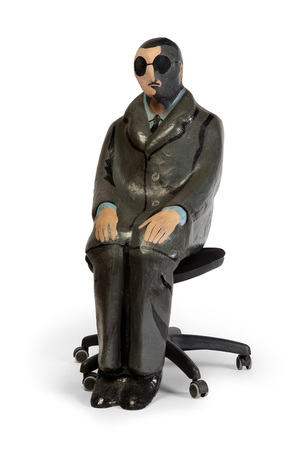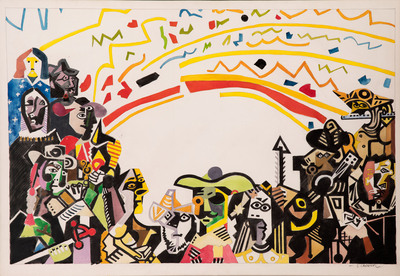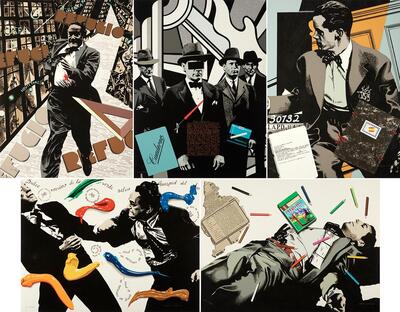Equipo Crónica: the renewal of the most rebellious figurative art
The most committed and ironic aspect of Equipo Crónica up for auction next February 15
More than 50 years ago, the artistic group Equipo Crónica was born in Valencia. His intense career had a real impact on a Spanish art scene that at the beginning of the 1960s and despite the irruption of Informalism in the previous decade, still remained under the yoke of the interests of the regime. The collective that it rebelled against informalist currents, of which Franco’s Spain had taken advantage to give a false sense of modernity and openness, managed to renew and revolutionize figuration in Spain with a rebellious and daring art full of references to mass culture. Despite joining the pop trend, he scathingly addressed the sociopolitical context of a country in the process of transformation . In this sense, his conception of artistic practice is rooted in critical realism and in all those cultural protest movements that advocated redefining the role of art and the artist, arguing that the artist should not only talk about society, but also get involved in its transformation.
Taking this premise into account, his plastic language was characterized by the combination, confrontation and superimposition of anachronistic and apparently unconnected images, but rooted in the collective memory that in their new context generated new meanings and readings, under which they questioned the reality of their time and artistic practice itself . Assuming that it is only possible to understand our present by taking into account the traces of tradition and past centuries, Solbes and Valdés built their own iconography full of historical and artistic, cultured and popular references, deliberately linked to the Spanish context of the moment. In this way, the group found in this aesthetic of irreverent tone and apparent banality close to pop art, the subterfuge to avoid government censorship while allowing them to establish a dialogue between the art of the past and the modernity of the avant-garde .
In this sense “Spectator of Spectators” represents an iconic work within a period in which political criticism will acquire greater significance and its language will become more radical. It is one of the few preserved copies of the multiple “spectator of spectators” made for the historic international avant-garde art festival “Encounters of 72” in Pamplona. After receiving the invitation to Solbes and Valdés, they decided to take advantage of the occasion to denounce the false climate of freedom of a dictatorship that, despite its decline, still maintained firm all its multiple forms of social control. To do this, they distributed among the attendees, 100 papier mâché multiples that clairvoyantly alluded to the figure of the police informant dressed in civilian clothes who was dedicated to identifying any opponent of the regime. Beaten, destroyed or mostly disappeared at the end of the event, this happening has transcended time as one of the most memorable episodes of contemporary Spanish art.
In another line of his production, but equally significant, is “the Iberian ring”, belonging to the “transition chronicle” series that began with the arrival of Picasso’s Guernica in Spain . In it, the constant references to the genius from Malaga acquire a double significance: as a reflection on artistic practice and his own tradition, but also as an allegory of the political commitment that his figure embodies. In this case, in addition to the direct allusion to Picasso and his bullfighting, “El ruedo ibérico” also refers to the homonymous anti-Franco magazine that, from exile, managed to circulate clandestinely in Spain, providing a critical reading of a period of transition with which many, including members of the Team, were beginning to become disenchanted.
The versatility of the group is manifested in the technical mastery they achieved in different disciplines, as can be seen from the set of serigraphs that make up the black series. In this masterpiece of his graphic production, part of the iconography from film noir and detective novels is used as a pretext through which they build a metaphor of the climate of violence they lived through. At the same time they reflect on artistic practice, understood here as a world with its own rules.
With its humorous and ironic images, Equipo Crónica succeeded in involving the viewer in their ability to read between the lines and recognize the collective cultural icons, as well as the political gags and anti-Francoist slogans that lay beneath a veil of comedy. This was undoubtedly one of his great triumphs.








